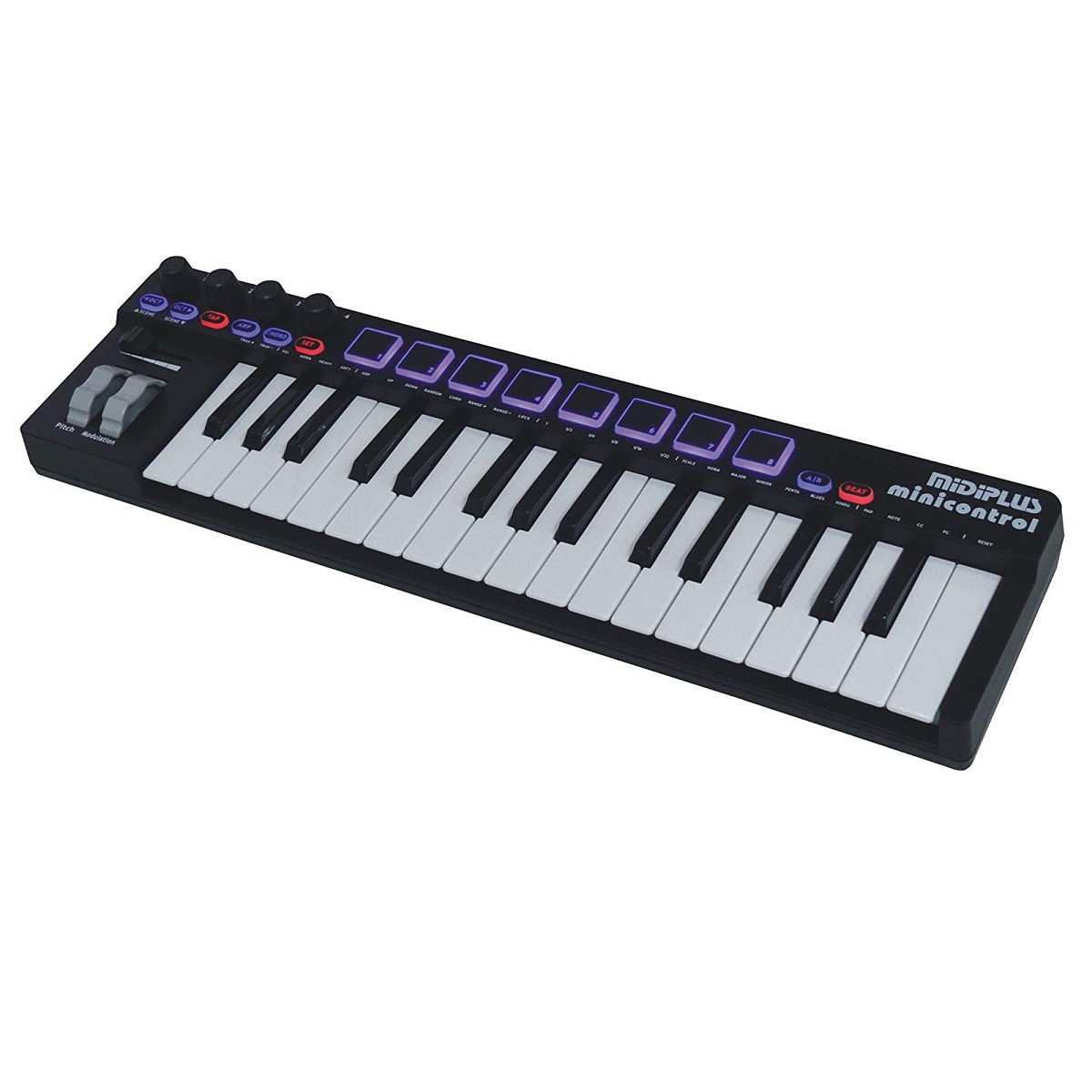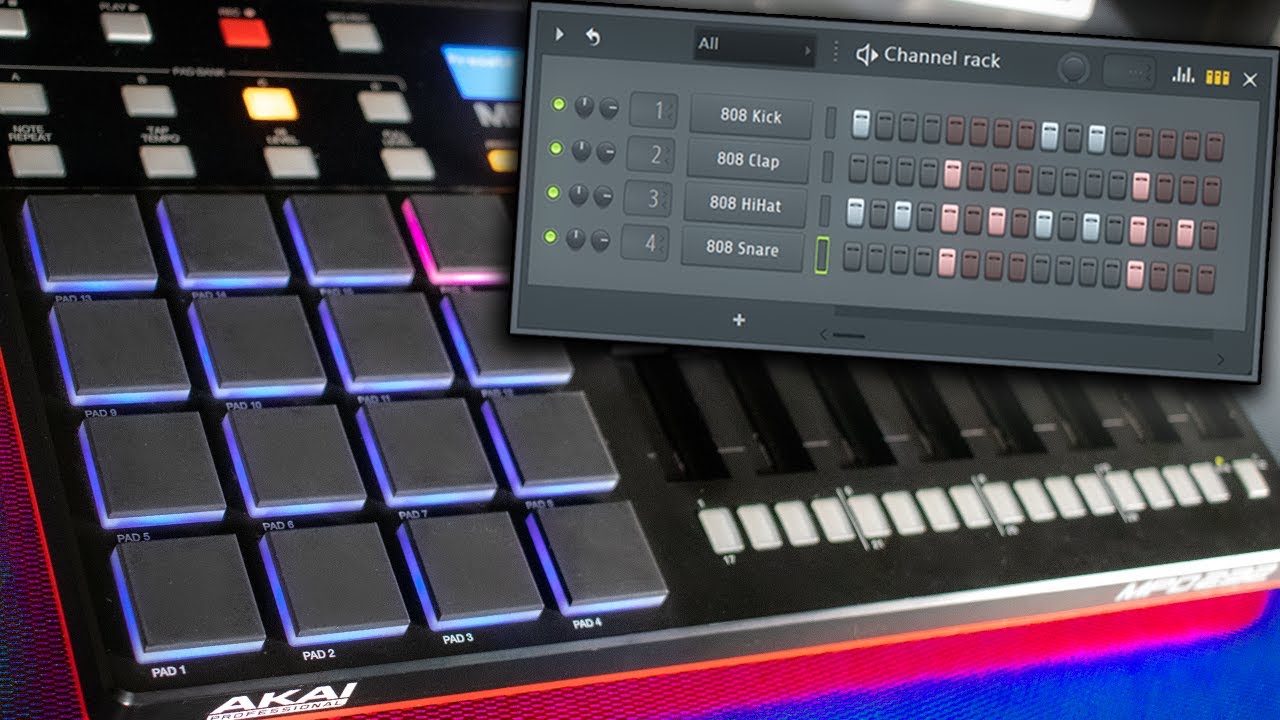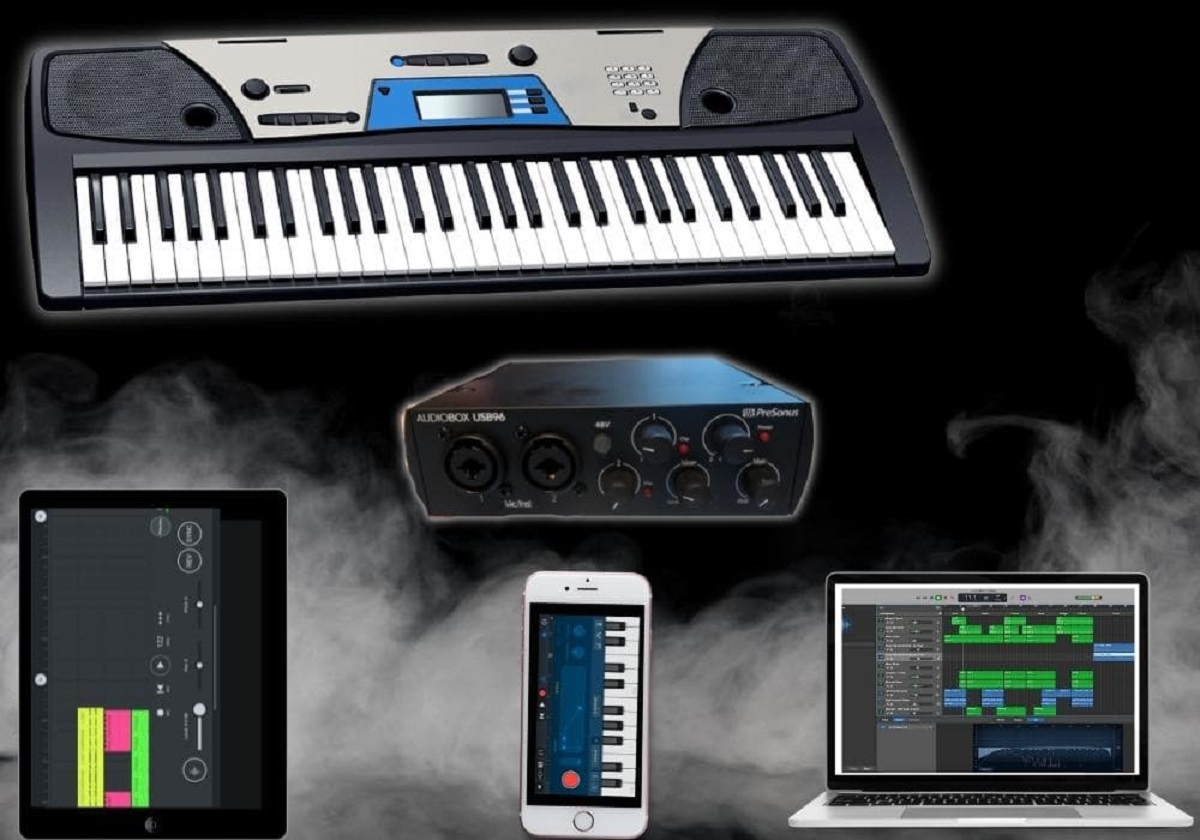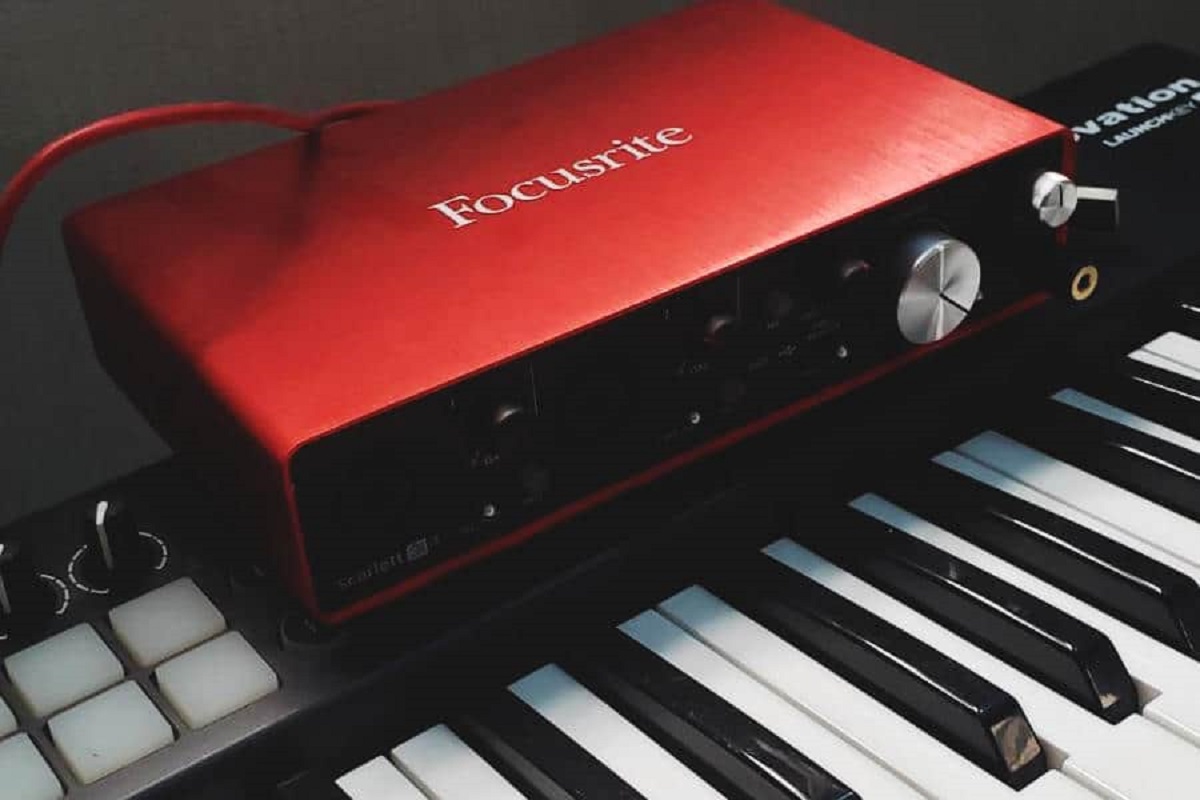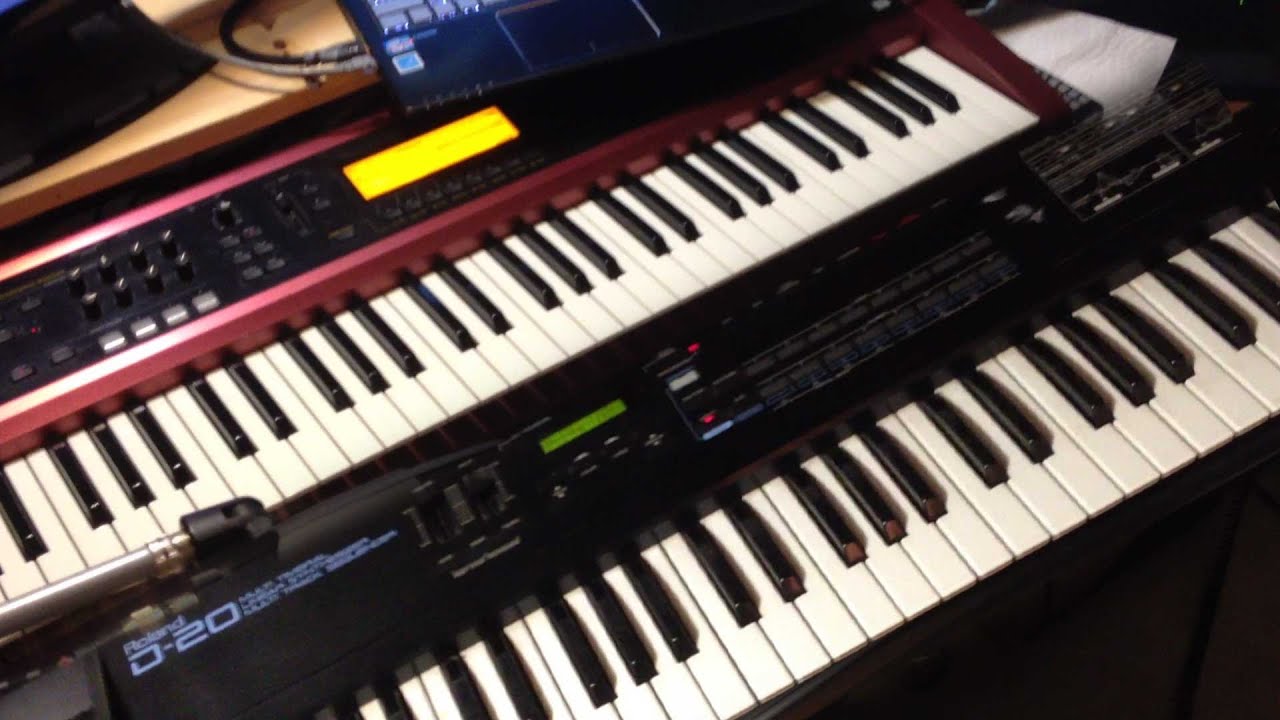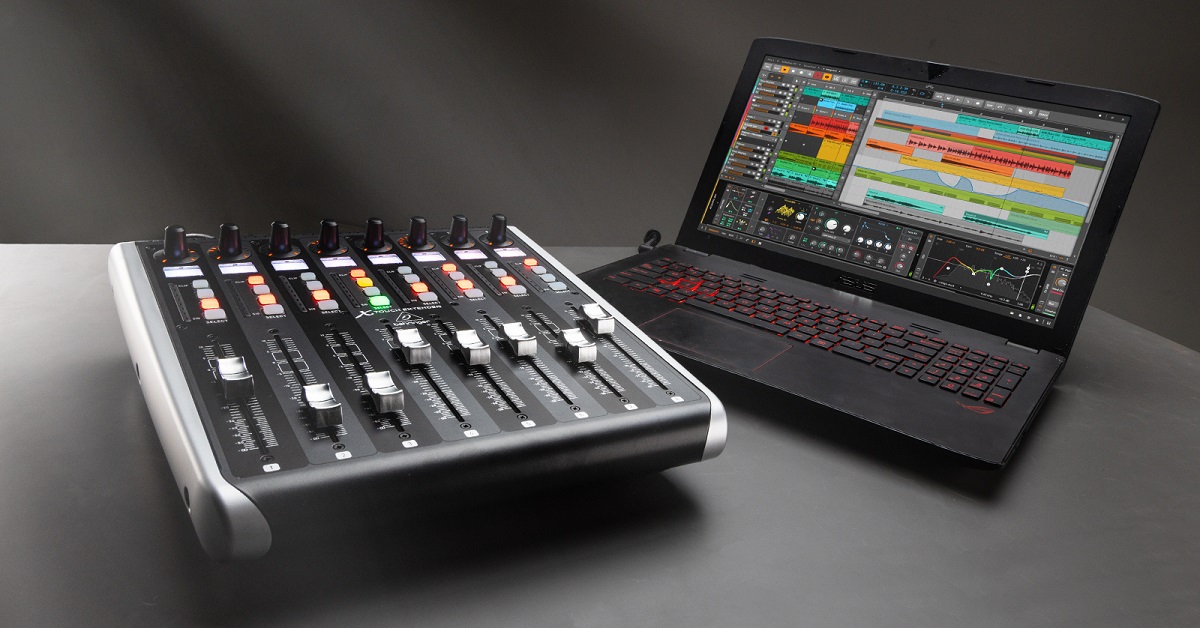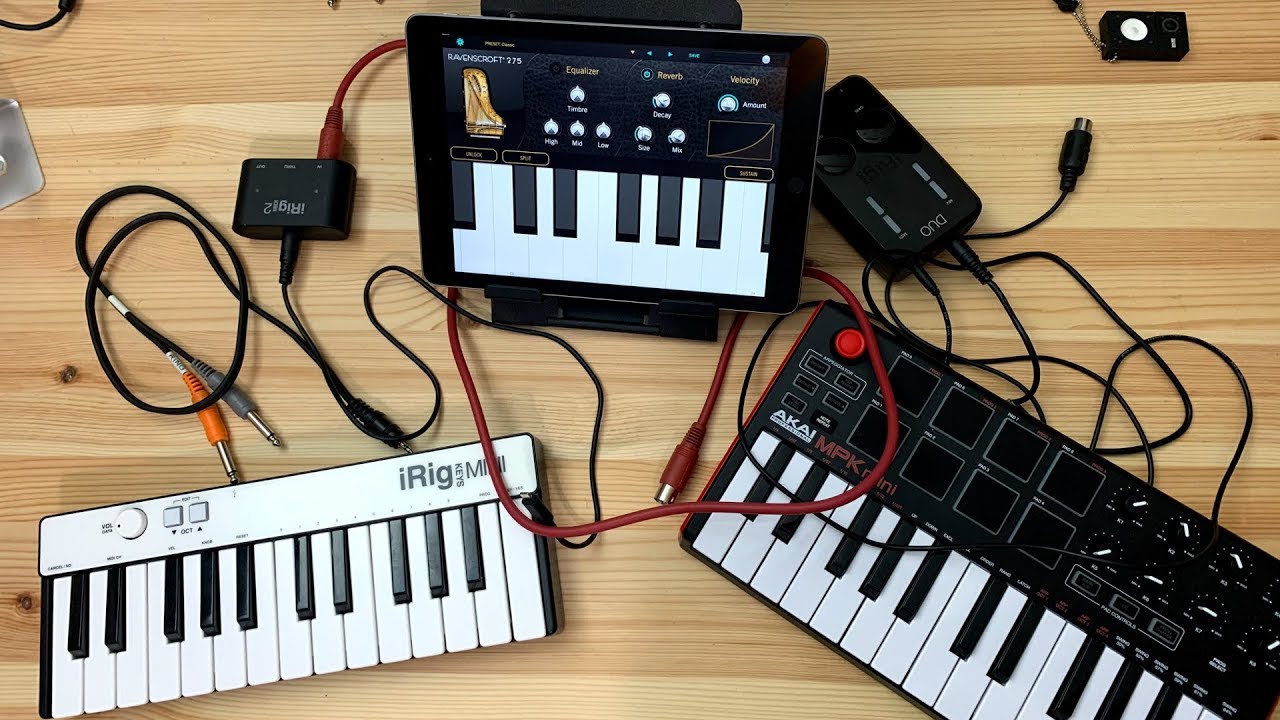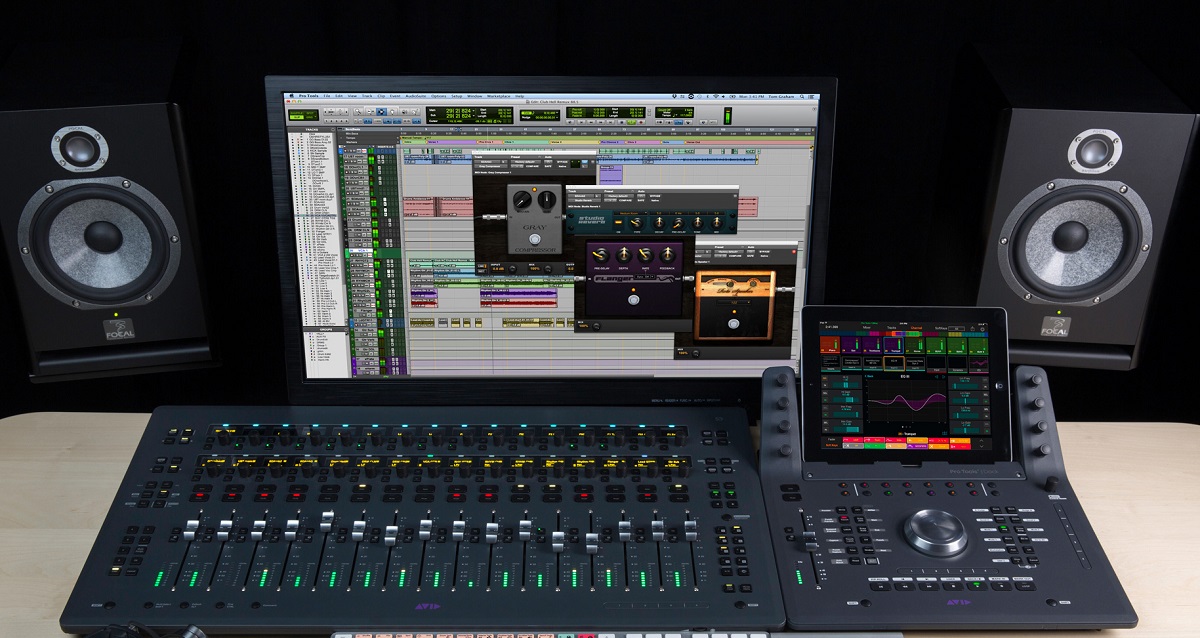Introduction
Welcome to the exciting world of MIDI keyboards! Whether you're a music enthusiast, a budding musician, or a seasoned professional, the ability to control a MIDI keyboard opens up a realm of creative possibilities. In this comprehensive guide, we will delve into the intricacies of controlling a MIDI keyboard, from understanding its fundamental components to optimizing its functionality within a Digital Audio Workstation (DAW).
Navigating the realm of MIDI keyboards can be both exhilarating and daunting, especially for beginners. However, with the right knowledge and guidance, you can harness the full potential of this versatile musical instrument. By the end of this guide, you will have a solid understanding of how to connect, configure, and customize your MIDI keyboard, enabling you to express your musical ideas with precision and artistry.
Whether you're a composer looking to craft intricate melodies, a producer seeking to add expressive layers to your tracks, or a performer aiming to captivate audiences with dynamic live performances, mastering the art of controlling a MIDI keyboard is a valuable skill. Join us on this enlightening journey as we unravel the mysteries of MIDI technology and empower you to unleash your creativity with confidence.
As we embark on this exploration, it's important to approach the process with an open mind and a willingness to experiment. Embracing the versatility of MIDI keyboards allows for endless experimentation and innovation, making it an indispensable tool for musicians across genres and skill levels.
So, without further ado, let's embark on this enlightening journey and unlock the boundless potential of controlling a MIDI keyboard. Whether you're a novice seeking guidance or a seasoned player looking to expand your horizons, this guide is tailored to equip you with the knowledge and expertise needed to navigate the captivating world of MIDI keyboard control. Let's dive in and unravel the secrets of MIDI keyboard mastery!
What is a MIDI Keyboard?
A MIDI keyboard, short for Musical Instrument Digital Interface keyboard, is a versatile electronic instrument that translates musical notes and commands into digital signals. Unlike traditional keyboards, MIDI keyboards do not generate sound on their own. Instead, they serve as controllers, allowing users to trigger and manipulate sounds from external devices such as computers, synthesizers, and sound modules.
At its core, a MIDI keyboard consists of piano-style keys, velocity-sensitive pads, knobs, sliders, and buttons, all of which are designed to facilitate expressive and intuitive musical interaction. These features enable musicians to input, manipulate, and perform music with remarkable precision and flexibility.
One of the key advantages of MIDI keyboards lies in their ability to transmit a wide range of musical data, including note pitches, velocity, modulation, and sustain information. This data is communicated through MIDI messages, which can be recorded, edited, and played back within a digital audio workstation (DAW) or music production software.
Moreover, MIDI keyboards come in various sizes, ranging from compact 25-key controllers to full-sized 88-key models, catering to the diverse needs and preferences of musicians. Whether you’re a pianist, producer, DJ, or composer, there’s a MIDI keyboard tailored to suit your specific musical endeavors.
With the evolution of technology, modern MIDI keyboards often integrate additional features such as aftertouch, which detects pressure applied after a key is struck, and programmable drum pads, offering an extensive array of creative possibilities for music production and performance.
Furthermore, MIDI keyboards have become indispensable tools in contemporary music production, enabling seamless integration with software instruments, virtual effects, and recording environments. Their compatibility with a wide range of music production software and hardware makes them essential components of the modern music-making process.
In essence, a MIDI keyboard serves as a gateway to a boundless sonic universe, empowering musicians to unleash their creativity, expressiveness, and musical vision with unparalleled fluidity and control. Its role as a catalyst for innovation and artistic exploration makes it an essential asset for musicians and producers seeking to elevate their craft.
Connecting the MIDI Keyboard
Connecting a MIDI keyboard to your music production setup is the first step toward harnessing its potential. The process involves establishing a seamless link between the MIDI keyboard and your computer or external sound modules, allowing for the exchange of musical data and control signals. Here’s a comprehensive overview of the essential steps to connect your MIDI keyboard effectively:
- USB or MIDI Interface: Most modern MIDI keyboards feature USB connectivity, enabling direct plug-and-play functionality with computers. Simply connect the USB cable from the keyboard to a USB port on your computer, and the necessary drivers will typically install automatically. For keyboards without USB connectivity, a MIDI interface can be used to connect the keyboard to the computer via MIDI cables.
- Power Supply: Depending on the model, your MIDI keyboard may be powered via USB or require an external power adapter. Ensure that the keyboard is receiving adequate power to function optimally.
- Software Configuration: Once the physical connection is established, configure your music production software to recognize the MIDI keyboard as a controller. This typically involves selecting the MIDI keyboard as a MIDI input device within the software’s preferences or settings.
- External Sound Modules: If you intend to trigger sounds from external hardware or sound modules, connect the MIDI output of the keyboard to the MIDI input of the sound module using standard MIDI cables. This allows the keyboard to communicate with the sound module and trigger the desired sounds.
By following these steps, you can ensure that your MIDI keyboard is seamlessly integrated into your music production environment, ready to unleash its creative potential.
Once the MIDI keyboard is successfully connected, you’ll be poised to explore its vast capabilities, from playing virtual instruments and recording MIDI sequences to controlling parameters in your music production software. The seamless integration of the MIDI keyboard into your setup sets the stage for a seamless and immersive music-making experience, empowering you to channel your musical ideas with precision and finesse.
Now that your MIDI keyboard is connected and ready to communicate with your music production setup, it’s time to explore the myriad possibilities for musical expression and creativity that await at your fingertips.
Choosing the Right Software
When it comes to leveraging the full potential of your MIDI keyboard, selecting the appropriate music production software is paramount. The right software not only facilitates seamless integration with your MIDI keyboard but also offers a diverse range of features for composing, recording, and producing music. Here are key considerations to keep in mind when choosing the ideal software for your MIDI keyboard:
- DAW Compatibility: Ensure that the software is compatible with your preferred Digital Audio Workstation (DAW). Most leading DAWs, such as Ableton Live, Logic Pro, Pro Tools, and FL Studio, offer robust support for MIDI controllers, allowing for intuitive mapping of controls and extensive MIDI editing capabilities.
- Virtual Instruments and Effects: Look for software that provides a rich library of virtual instruments and effects, including pianos, synthesizers, drum kits, and audio effects. This allows you to harness the full sonic potential of your MIDI keyboard, enabling you to explore diverse sounds and textures while composing and performing.
- MIDI Mapping and Customization: Opt for software that offers intuitive MIDI mapping and customization options. This feature empowers you to assign MIDI controls to various parameters within the software, such as adjusting virtual instrument settings, manipulating effects, and recording automation data with precision.
- Sequencing and Recording Capabilities: Choose software that provides advanced sequencing and recording capabilities, allowing you to capture and edit MIDI performances with ease. Robust MIDI editing tools, quantization features, and flexible recording workflows are essential for shaping musical ideas and arrangements.
- Performance and Live Playback: If you intend to use your MIDI keyboard for live performances, seek software that offers reliable performance features, including low-latency playback, flexible routing options, and seamless integration with external hardware for a dynamic and responsive live experience.
By carefully evaluating these factors, you can select software that aligns with your creative workflow and maximizes the potential of your MIDI keyboard. Whether you’re a composer, producer, or performer, the right software serves as a catalyst for unleashing your musical vision with precision and artistry.
Once you’ve chosen the ideal software, you’re poised to embark on a transformative musical journey, where the seamless synergy between your MIDI keyboard and the software empowers you to explore new sonic landscapes, express your musical ideas, and elevate your creative output with confidence and flair.
With the right software in your arsenal, you’re well-equipped to harness the full potential of your MIDI keyboard, opening doors to boundless musical expression and innovation.
Setting Up the MIDI Keyboard in Your DAW
Configuring your MIDI keyboard within your Digital Audio Workstation (DAW) is a pivotal step that unlocks its full potential as a versatile music production tool. By integrating the MIDI keyboard into your DAW environment, you gain the ability to control virtual instruments, record expressive performances, and manipulate various parameters with precision. Here’s a comprehensive guide to setting up your MIDI keyboard in your DAW:
- Device Recognition: Upon connecting your MIDI keyboard to your computer, ensure that your DAW recognizes the device as a MIDI input. Most DAWs automatically detect MIDI controllers, but you may need to navigate to the software’s preferences or settings to verify that the MIDI keyboard is identified as an available input device.
- MIDI Mapping: Familiarize yourself with the MIDI mapping capabilities of your DAW. This feature allows you to assign MIDI controls, such as keys, pads, knobs, and sliders, to specific parameters within the software, such as instrument parameters, mixer controls, and effects settings. Mapping MIDI controls enhances your ability to interact with the DAW and shape your musical ideas in real time.
- Instrument Integration: Explore the process of integrating virtual instruments with your MIDI keyboard. Most DAWs offer seamless integration with software instruments, enabling you to play and control virtual pianos, synthesizers, drum kits, and other virtual instruments using your MIDI keyboard. Familiarize yourself with the instrument loading process and MIDI channel assignments to ensure smooth interaction between the keyboard and the virtual instruments.
- Recording MIDI Performances: Learn how to record MIDI performances within your DAW. Whether you’re capturing melodic phrases, rhythmic patterns, or expressive modulations, understanding the recording workflow allows you to preserve your musical ideas and performances as MIDI data, which can be edited, quantized, and manipulated to perfection.
- Parameter Control and Automation: Delve into the realm of parameter control and automation using your MIDI keyboard. Many DAWs offer robust automation features that enable you to record and edit real-time MIDI controller movements, such as modulations, pitch bends, and filter sweeps. This level of control adds depth and nuance to your musical productions, elevating the expressive capabilities of your MIDI keyboard.
By mastering the setup and integration of your MIDI keyboard within your DAW, you position yourself to explore a world of creative possibilities, from crafting intricate compositions to delivering captivating live performances. The seamless synergy between your MIDI keyboard and the DAW empowers you to channel your musical vision with unparalleled fluidity and control.
With your MIDI keyboard seamlessly integrated into your DAW environment, you’re poised to embark on a transformative musical journey, where the boundaries between imagination and realization blur, and the art of musical expression reaches new heights.
Now that your MIDI keyboard is intricately woven into the fabric of your DAW, the stage is set for you to unleash your creativity and musical prowess with unwavering confidence.
Customizing MIDI Keyboard Settings
Customizing the settings of your MIDI keyboard is a pivotal aspect of tailoring the instrument to suit your unique creative workflow and performance preferences. By delving into the customization options offered by your MIDI keyboard, you can optimize its functionality, enhance expressive control, and streamline your music production process. Here’s a comprehensive guide to customizing MIDI keyboard settings:
- Key Sensitivity and Response: Many MIDI keyboards feature adjustable key sensitivity settings, allowing you to customize the response of the keys to suit your playing style. Whether you prefer a light touch for delicate passages or a firmer response for dynamic performances, fine-tuning the key sensitivity enhances your expressive capabilities.
- Assignable Controls: Explore the assignable controls on your MIDI keyboard, such as knobs, sliders, and pads. Most MIDI controllers offer the flexibility to assign these controls to various parameters within your music production software, providing tactile manipulation of instrument settings, effects parameters, and mixer controls.
- Velocity Curves: Familiarize yourself with the velocity curve settings of your MIDI keyboard. Velocity curves determine the relationship between key strike intensity and MIDI note velocity, allowing you to adjust the keyboard’s response to dynamics. This customization ensures that your performances accurately convey nuances in touch and expression.
- Octave and Transposition Controls: Utilize octave and transposition controls to expand the playable range of your MIDI keyboard. These settings enable you to shift the keyboard’s octave range and transpose notes on the fly, providing flexibility for playing diverse musical parts and adapting to different musical keys.
- Pad and Control Layouts: If your MIDI keyboard features pads and assignable controls, take advantage of the ability to customize their layout and functionality. This customization allows you to create personalized control mappings tailored to your specific performance and production requirements.
By delving into the realm of MIDI keyboard customization, you empower yourself to mold the instrument into a seamless extension of your musical imagination. The ability to tailor the keyboard’s response, controls, and functionality to your preferences fosters a deeper connection between you and your music, enhancing the fluidity and expressiveness of your performances and productions.
With your MIDI keyboard finely tuned to your specifications, you’re poised to embark on a musical journey where every note, gesture, and modulation reflects your artistic vision with precision and authenticity.
As you navigate the realm of MIDI keyboard customization, embrace the opportunity to sculpt an instrument that resonates with your creative identity, amplifying the depth and richness of your musical expressions.
Tips for Controlling the MIDI Keyboard Efficiently
Mastering the art of controlling a MIDI keyboard efficiently not only enhances your musical workflow but also elevates the expressive potential of the instrument. Whether you’re composing, performing, or producing music, implementing the following tips will optimize your interaction with the MIDI keyboard, allowing for seamless creativity and precision:
- Practice Velocity Dynamics: Embrace the nuanced control of velocity-sensitive keys by practicing dynamic playing techniques. Varying key strike intensity allows for expressive articulation, shaping the dynamics and emotive qualities of your performances.
- Utilize Key Mapping and Shortcuts: Familiarize yourself with key mapping and shortcuts within your music production software. Assign frequently used functions, such as transport controls, quantization, and track navigation, to specific keys on your MIDI keyboard, streamlining your workflow and enhancing efficiency.
- Experiment with Modulation and Pitch Bend: Explore the expressive potential of modulation and pitch bend wheels on your MIDI keyboard. These controls enable nuanced pitch and timbral variations, adding depth and character to your performances, particularly when playing expressive lead lines and solos.
- Customize Control Assignments: Take advantage of the MIDI keyboard’s assignable controls to create custom control mappings tailored to your preferred parameters. Whether adjusting filter cutoff frequencies, effect levels, or virtual instrument parameters, personalized control assignments enhance real-time manipulation and performance dynamics.
- Layer and Split Keyboard Zones: Experiment with layering and splitting keyboard zones to play multiple sounds simultaneously or divide the keyboard into distinct sections for different instrument parts. This technique expands your sonic palette and facilitates versatile performance capabilities.
- Record and Edit MIDI Performances: Utilize the recording and MIDI editing features of your DAW to capture and refine your MIDI performances. Editing note velocities, adjusting timing, and refining musical phrases empower you to craft polished and expressive musical arrangements.
- Explore Scale and Chord Modes: If your MIDI keyboard offers scale and chord modes, leverage these features to stay in key and trigger complex chord voicings with ease. This empowers you to experiment with harmonic structures and melodic variations, even if you have limited theoretical knowledge of music theory.
- Integrate Expression Pedals: Consider integrating expression pedals with your MIDI keyboard to expand expressive control over parameters such as volume, modulation, and wah effects. Expression pedals offer tactile manipulation, enhancing the organic and dynamic nature of your performances.
By incorporating these tips into your MIDI keyboard workflow, you’ll unlock a world of creative possibilities, infusing your musical expressions with depth, nuance, and precision. Embracing efficient control techniques empowers you to navigate the sonic landscape with confidence and finesse, enriching your musical journey with boundless expressive potential.
As you embark on your musical endeavors, remember that the mastery of MIDI keyboard control is a continuous evolution, where each exploration and discovery contributes to the refinement of your artistic voice and the realization of your musical aspirations.
With these efficient MIDI keyboard control techniques at your disposal, you’re poised to embark on a transformative musical journey, where the instrument becomes a seamless extension of your creative vision, empowering you to articulate your musical ideas with unparalleled fluency and artistry.







